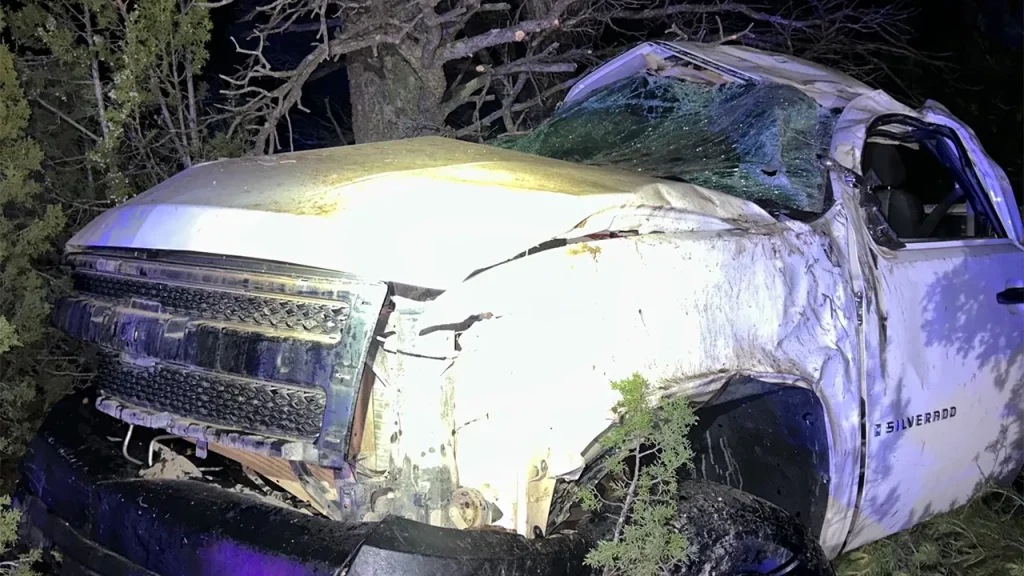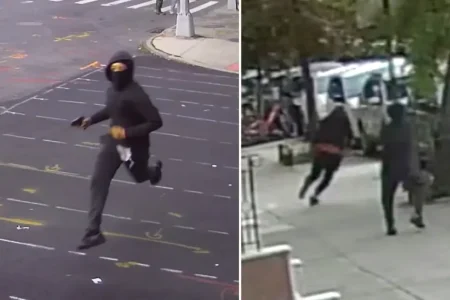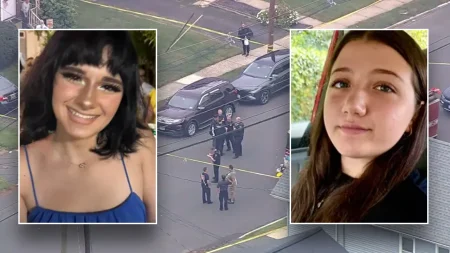Teenage Joyride Turns Dangerous: Intoxicated 13-Year-Old Crashes Stolen Truck with Child Passenger
In the quiet early hours of Tuesday morning in Flagstaff, Arizona, what began as a teenage joyride quickly escalated into a harrowing incident that could have ended in tragedy. Around 1 a.m., Arizona Department of Public Safety (DPS) officers received reports of a wrong-way driver on Interstate 40. What they discovered was far more alarming: a 13-year-old driver, severely intoxicated, behind the wheel of a stolen Chevrolet Silverado with an 11-year-old passenger. This incident represents not just a violation of traffic laws, but highlights deeper societal concerns about youth supervision, substance abuse among minors, and the potential for devastating consequences when these issues intersect.
The sequence of events unfolded rapidly once authorities spotted the vehicle. A deputy first observed the truck crossing the median into oncoming traffic before the young driver managed to correct course. Rather than stopping, however, the teen accelerated to speeds exceeding 100 mph, creating an increasingly dangerous situation on the highway. The white Chevrolet Silverado, which had been reported stolen earlier by the Flagstaff Police Department, eventually veered onto a guardrail before flipping multiple times and crashing violently into a tree. The impact was so severe that the truck’s steering wheel completely detached, landing approximately 50 feet from the mangled wreckage. Photos later released by DPS revealed a devastating scene: the truck’s roof caved in and its front end twisted against trees, with the dislodged steering wheel lying in tall grass nearby.
Miraculously, both young occupants survived the crash with non-life-threatening injuries, though they required hospitalization. The investigation following the accident revealed even more troubling details about the circumstances. Police observed that the 11-year-old passenger showed “six out of six signs of intoxication,” suggesting both children had been consuming alcohol before or during the joyride. A subsequent blood test conducted on the 13-year-old driver revealed a blood alcohol concentration of 0.183 – more than twice the legal limit for adults and dramatically above Arizona’s zero-tolerance law for underage drivers. This level of intoxication in someone so young is particularly alarming, raising serious questions about how these children accessed alcohol and why they were unsupervised at such a late hour.
The legal consequences for the teenage driver are substantial, even at such a young age. According to Arizona DPS, the 13-year-old will face DUI charges, with additional charges expected related to the stolen vehicle and reckless driving. While the justice system will determine appropriate consequences, this case exemplifies how poor decisions in youth can lead to serious legal repercussions that may follow these children for years to come. The incident has prompted Arizona’s Highway Patrol to issue public statements emphasizing the dangers of juvenile joyriding and underage drinking. On their Facebook page, they wrote: “We’re thankful the kids are okay, but this could’ve ended way worse. Juvenile joyriding and underage drinking are extremely dangerous. Talk to your kids about the dangers of drinking and unlicensed driving.”
This incident in Flagstaff is unfortunately not isolated, but rather part of a concerning pattern of similar events across the country involving underage drivers, stolen vehicles, and substance abuse. Just recently, other headlines have highlighted cases like an SUV driver running over an 8-year-old boy on a bike before fleeing, and a Maryland mother killed when teens in a stolen car crashed into her and her child. These parallel tragedies underscore that while the Flagstaff incident ended without fatalities, the potential for loss of life in such scenarios is very real. Each case serves as a sobering reminder of how quickly poor decisions can lead to irreversible consequences, particularly when vehicles – essentially multi-ton machines capable of tremendous destruction – are involved.
The broader implications of this incident extend beyond the immediate legal consequences for the young driver. It invites communities to reflect on several important questions: How are children accessing alcohol and vehicles? What supervision gaps exist that allow such dangerous situations to develop? And perhaps most importantly, what preventative measures can families, schools, and communities implement to better protect young people from making similarly dangerous choices? While this incident ended with both children surviving, the outcome could have been drastically different – for them and for any innocent bystanders who might have crossed their path that night. As the Arizona DPS continues their investigation and the legal process unfolds, this case serves as a powerful cautionary tale about the importance of teaching children about responsibility, the dangers of substance abuse, and the potentially life-altering consequences of momentary poor decisions.










